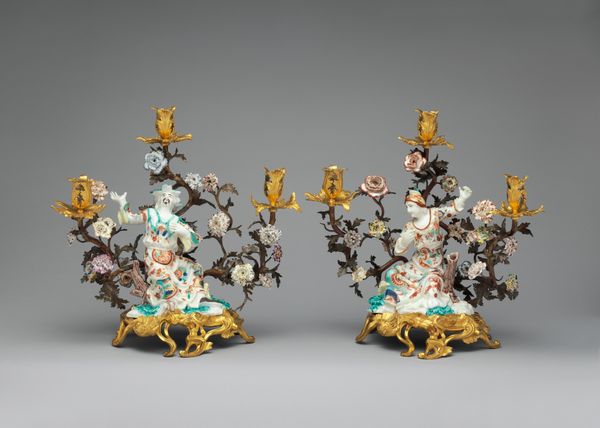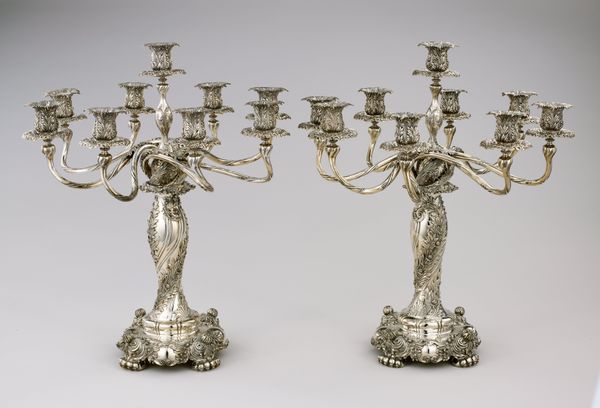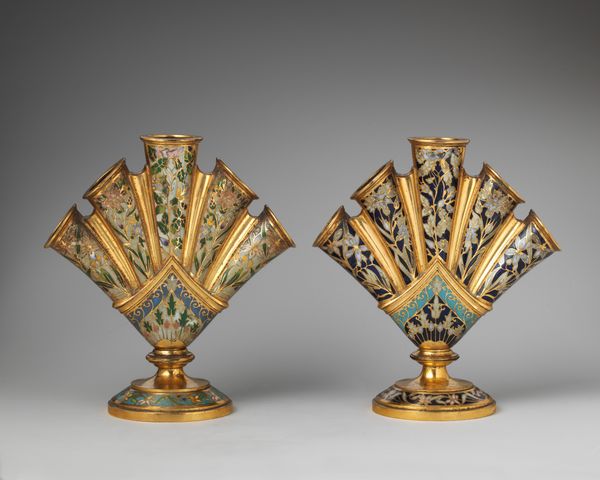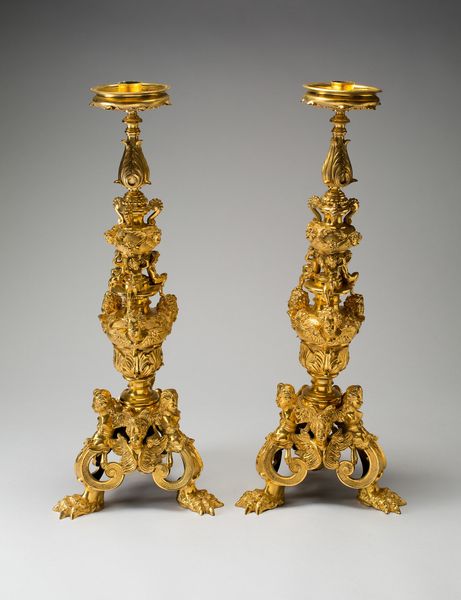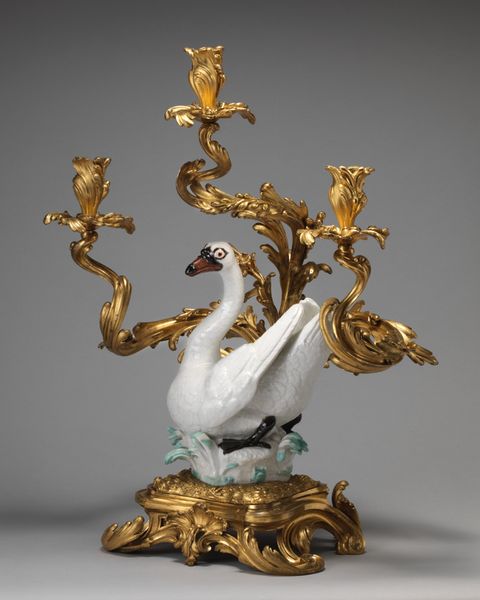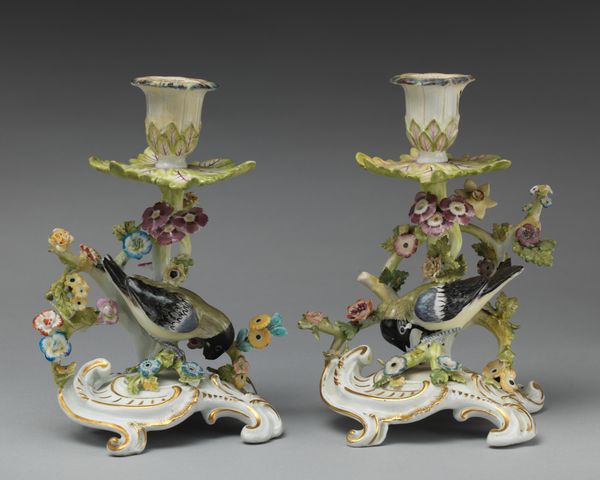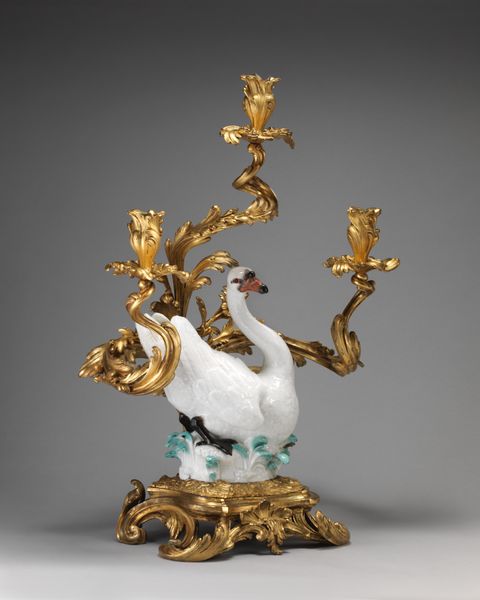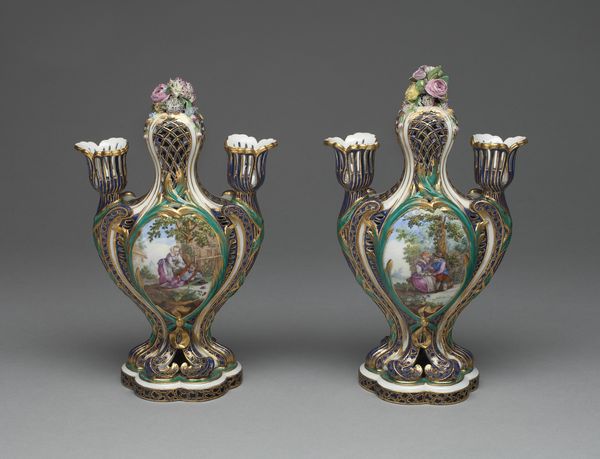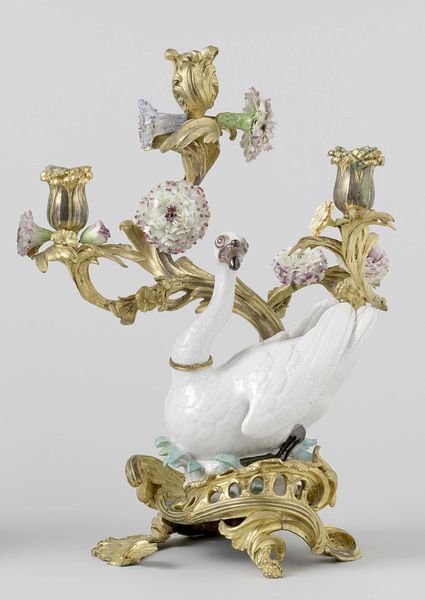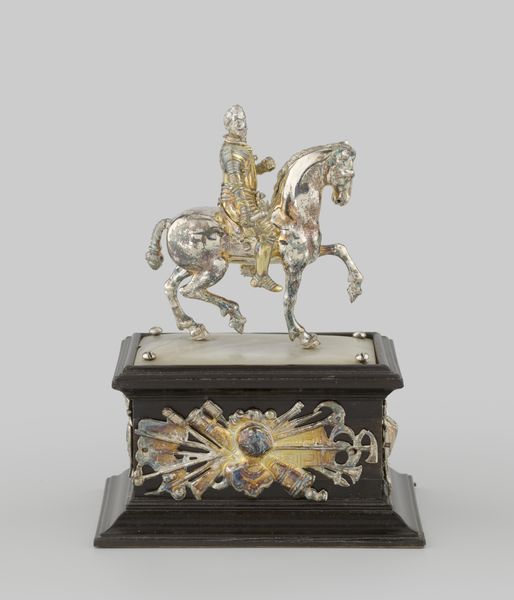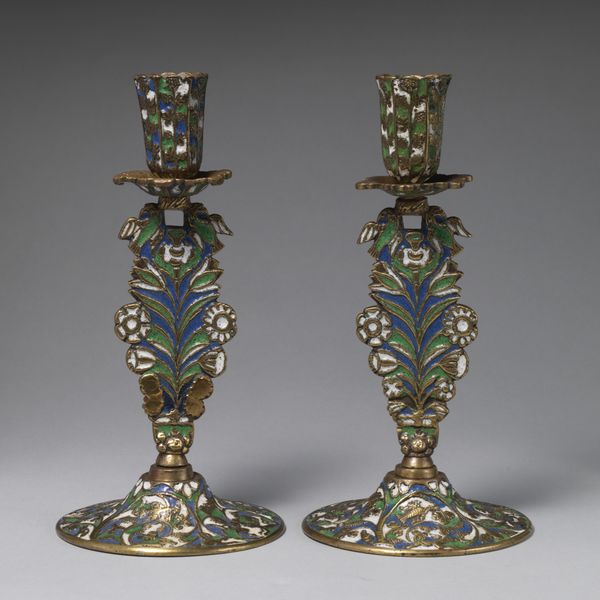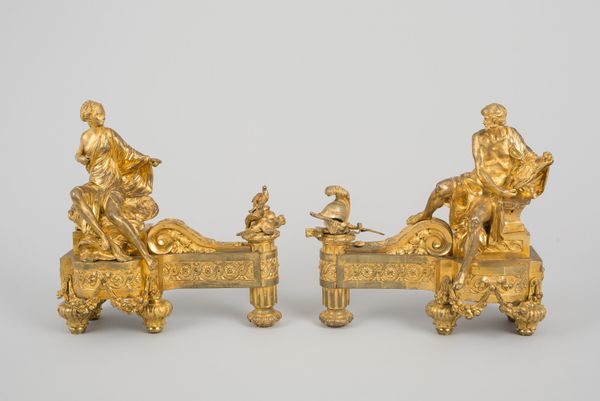
Three-light candelabra (candélabre or girandole) (one of a pair) 1745 - 1755
0:00
0:00
ceramic, porcelain, sculpture
#
baroque
#
ceramic
#
bird
#
porcelain
#
sculpture
#
decorative-art
#
rococo
Dimensions: Height (overall): 23 in. (58.4 cm); Height (bird): 15 in. (38.1 cm)
Copyright: Public Domain
Editor: Here we have a pair of porcelain candelabras created between 1745 and 1755 by Johann Joachim Kändler. Their ornate gold finish, combined with those beautifully crafted birds, strikes me as incredibly elaborate. How would you interpret the design of these sculptures? Curator: We must examine these forms in terms of their pure visual language. Note how the curvilinear lines dominate. This rococo style emphasizes asymmetry and movement, visible in the swirling foliage and the birds' poised stances. It is through the interplay of these visual elements that the artist conveys dynamism and opulent luxury. What is your perspective on their compositional choices? Editor: Well, the birds act as the focal point, drawing the eye upwards through the intertwining branches of the candleholders. But is there a deliberate contrast between the naturalistic depiction of the birds and the artificiality of the gilded metalwork? Curator: Indeed! It is in this juxtaposition that the work achieves a visual tension, a deliberate fracturing of unity that exemplifies rococo aesthetics. Furthermore, observe the deployment of light and shadow across the intricate surfaces; this is essential for activating the form, giving it life. How do you see those details functioning formally? Editor: I see that the reflective surface of the gold enhances the play of light, highlighting certain aspects, while other details are hidden in shadow, creating a sense of depth. It seems that both the light and form create meaning here. Curator: Precisely. And so, by analyzing these formal elements—line, light, and composition—we can unlock an understanding of the creator’s aesthetic intent, divorced from concerns of historical or cultural narratives. Editor: This has changed the way I look at decorative art; I often overlook how much visual information you can unpack. Curator: As an art historian it’s so useful to reflect on our changing perspectives and our role as critical observers.
Comments
No comments
Be the first to comment and join the conversation on the ultimate creative platform.
